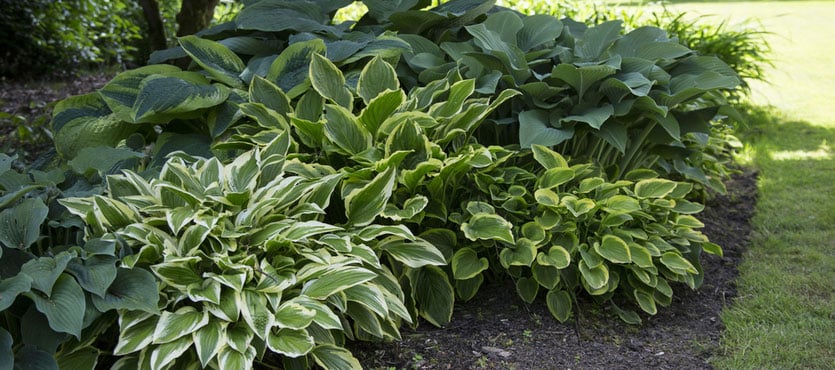Plants are the perfect addition to any public space and particular plants, such as perennials, make an excellent option. Beware of plants that attract bugs or may be toxic to pets and children. Picking the right assortment of plants for your public space will add beauty while serving as a way to attract more people to an area. Plus, plants are good for the health and wellbeing of the entire community.
Keep reading to learn about some of our favorite plants for public spaces.
Great Plants for Public Spaces: Perennials
Perennials are an excellent choice when seeking the best plants for public spaces. They are easy to maintain and add a good deal of color and diversity to any space. Commonly used in parks, public plazas, roundabouts, and raised plant beds, perennials enjoy a long life without much fuss.
Considered ‘herbaceous perennials,’ this type of plant has roots that can withstand cold winters. That means you can keep them in the same location for years without worrying about cold temperatures. This takes away the extra chore of relocating the plant in winter.
When planting perennials, costs are highest during the first year but go down considerably from there.
There are many varieties of perennials, some of the best for public spaces include:
Plantain Lily (Hosta)
Stonecrop
Black-eyed Susan
Lady’s Mantle
Japanese Anemone
Japanese Aster
Knotweed
Catnip
6 Goals to Achieve to Find the Best Plants for Public Spaces
Sustainable Plants
“Sustainability” is a big buzz word these days – and to achieve a sustainable space that means you need to select plants that grow and thrive in your area without a lot of added maintenance. In addition, you must plant them in the right places; for instance, you don’t want to stick a sun-loving plant in the shade and visa-versa.
Native Plants
Native plants are a safe bet when seeking greenery for public spaces. Keep in mind, if a plant is native to an area that means it is meant to thrive in local conditions without much assistance or intervention from humans. Native plants are naturally able to survive in your region – and that’s a great thing when it comes to reducing maintenance.
Re-consider Pollenating Plants
While we want to encourage bees and other important bugs to thrive in certain locations, public places are not the ideal spot for a lot of bees to hang out. Plants that contain pollen attract bugs and may spark allergies too. Therefore, it’s worth rethinking before investing in a planter filled with pollenating plants.
Shade is Important
Adding shade to a public space is important, especially if people will spend time sitting or hanging out in the space. Plant shady trees that hang over benches or other seating areas, such as grassy spaces where people could have a picnic. Keep in mind, you can plant small to medium-sized trees in large planters for an extra boost of shade.
Good Soil
No matter if you are adding plants to planters or in-ground, soil is an important component you don’t want to forget about. Quality soil is key to thriving and healthy plants. Poor quality soil will turn even the best plants for public spaces into brown and dead eyesores.
Aim for Large Plants
Large plants are great because they take up more space, which means you’ll have to plant fewer plants to cover the same ground. That makes it more affordable and easier to maintain the space.
Do Dogs Visit Your Space?
If you’re creating a dog-friendly public space, it’s important to avoid plants that are toxic to canines. There are many common plants that are toxic to dogs and can cause serious problems If ingested. Many of the same plants that are toxic to dogs are also toxic to children.
Some plants that are non-toxic to dogs include:
African Daisy
African Violet
Algaroba
Alumroot
Amur Maple
Areca Palm
Australian Pine
Baboo Palm
Bamboo
Banana
Barberton daisy
Basil
Beets
Bloodleaf
Blooming Sally
Blue Eyed Daisy
Blue Sword Fern
Bottle Palm
Bottlebrush
Bristly Greenbrier
Broom Hickory
Buzzy Lizzie
Calathea
Cane Palm
Canna Lily
Carrion Flower
Christmas Cactus
Club Moss
Creeping Rubus
Crimson Cup
Feather Palm
Fire Weed
Figleaf Palm
Hemlock Tree
Haworthia
Jasmine
Kentia Palm
Liliy
Little Zebra Plant
Living Stones
Moss Phlox
Mossy Campion
Natal Plum
Nerve Plant
Peacock Plant
Pearl Plant
Pink Sarlite
Pitaya
Prairie Lily
Red African Violet
Silver Pink Vine
Silver Table Fern
Sugar Pods
Sunflower
Tiger Lily
Washington Hawthorn
Water Hickory
Woodflower
Yellow Palm
The ASPCA.org maintains an excellent resource that includes an extensive list of plants that are toxic and non-toxic to dogs, check it out here.
Don’t Forget the Planter!
The right planter for public spaces is equally as important to finding the best plants for public spaces. At TerraCast Products, we offer the highest quality planters for public spaces. Made to last much longer than the competition, our planters are crafted right here in the USA from a unique resin-based material that resists stains, cracks, and other damages. Learn more

